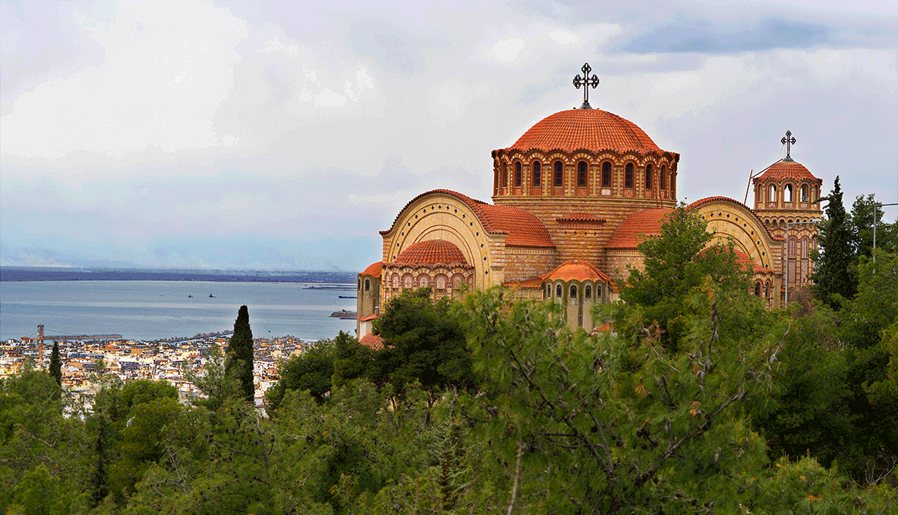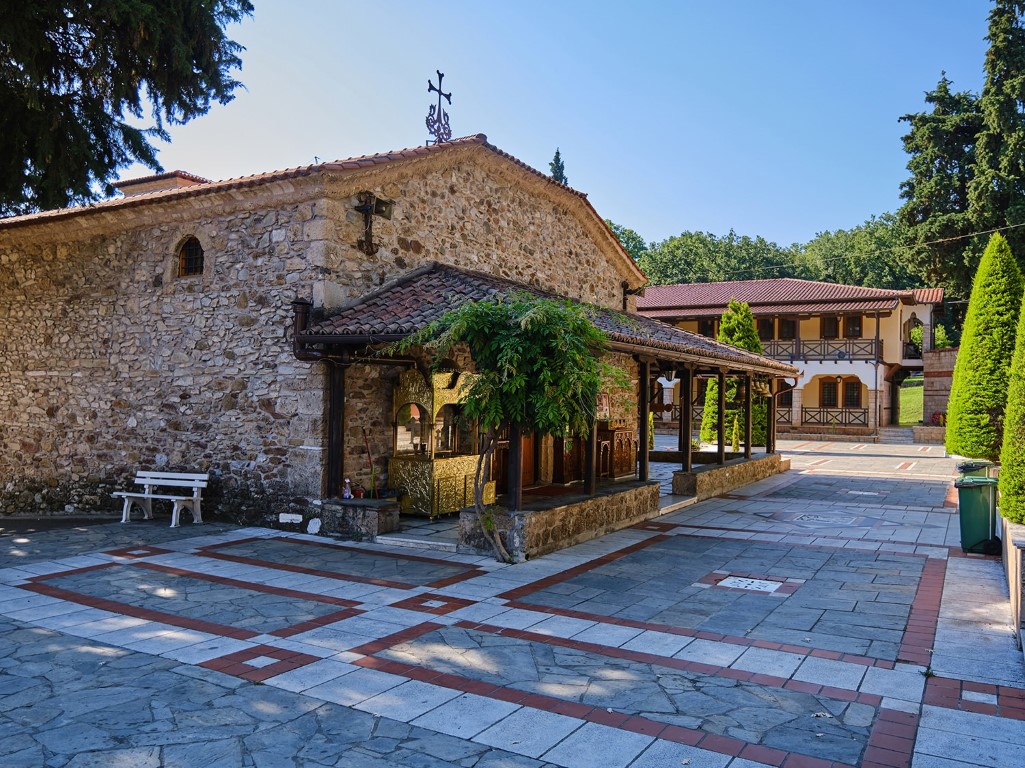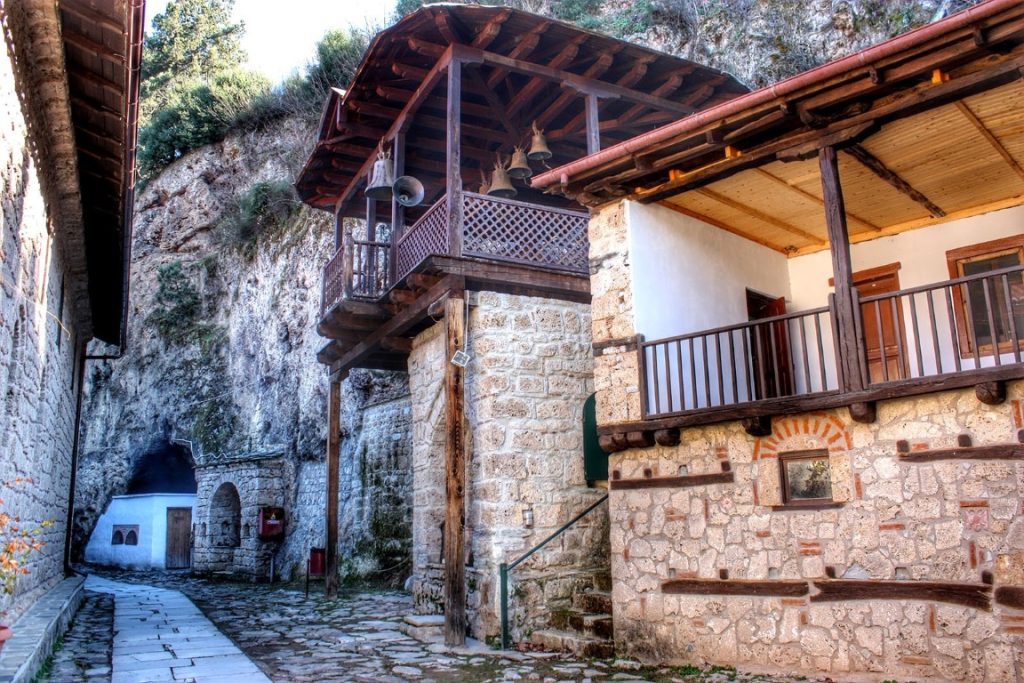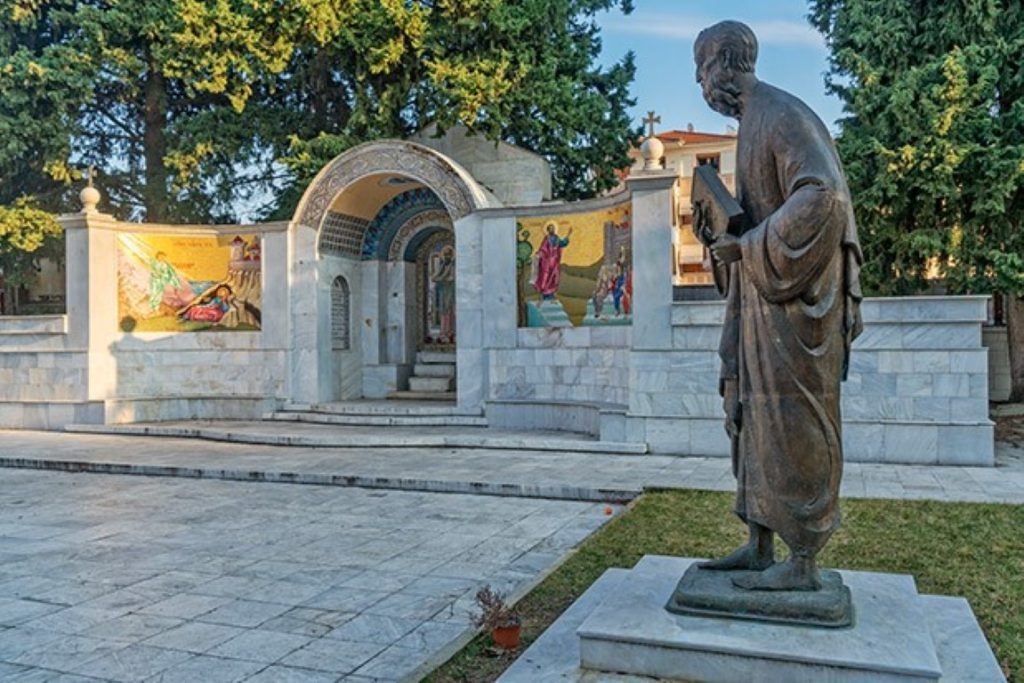Veroia Private Tour
Estimated Duration
8 Hours
Estimated Distance
200 Km

Church of St. Paul
At the district of St Paul, northeastern of Thessaloniki, dominates the majestic church dedicated to the Apostle of the Nations, since the area is related to his passing from Thessaloniki in 50 AD.
According to tradition, in this area, east of the later Monastery of Vlatadon, at the foothills of Kedrinos hill, there was a spring of water where the Apostle drank some water, when the residents helped him escape from the walls of the city on his way to Veroia. The spring became known as the “holy spring of Apostle Paul” and was an area of pilgrimage for the believers for centuries. During the period of the Turkish occupation, in 1875, the Greek community granted the area to the Charitable Brotherhood of Men of Thessaloniki and after the liberation of the city as small church was built dedicated to Apostle Paul.
The church was designed by the architect Xenophon Paionidis and was inaugurated on the 10th of April 1922, Sunday of Thomas. During the decade of 1970 the modern majestic church was constructed a bit higher.
Today at the estate of the Charitable Brotherhood of Men of Thessaloniki, at the shadow of the impressive large church, one can visit the small church, to wander in the beautifully shaped area of the yard, to see the point where, according to tradition, Apostle Paul rested, to follow the path until the tribune and the holy spring and admire the view to Thermaic Gulf. Since 1922 the church has been the focus of a brilliant celebration on the day of celebration of Peter and Paul, on the 29th of June. Nowadays, each summer they carry out the Agiopaulitika, a three-day celebration that combines the religious events with folk tradition and modern culture.

Holy Monastery of Panagia Dovra in Veroia
The exact year of the foundation of the Holy Monastery of Panagia Dovra and the names of its founders and first settlers remain unknown to this day. The first historical evidence of the existence of the monastery in 1635 is a hereditary note in a scroll of the 12th century.There are many hypotheses and theories about the origin of the name of the village of Dovra, from which the monastery took its name. It is worth mentioning the testimony of the year 1149 about a village “of the subject of Verroia, called Dobrochuvista”, which is identical to the present-day village of Dovra, where the Emperor Manuel I Komnenos met with the abbot of the Monastery of Pantokrator of Constantinople, Joseph.According to historians, the Monastery of Panagia Dovra is identified with the Byzantine monastery of Kokumitriotissa. The name “Kokumitriotissa” probably comes from the name of a well-known noble family of Veroia, the Koukumis family. According to another opinion, the name of the Byzantine monastery “Kokumitriotissa” is possibly connected with the Monastery of Koukoumon, which refers to the life of the first patron saint of Veroia, Saint Jerusalem.In a note of 1770 by Hatzi Savvas Panagiotis, which is preserved in the Public Library of Veroia, the monastery is called “Dovra” and until 1822 it goes through phases of smaller and larger prosperity in terms of both manpower and assets.On 19 February 1822, the beginning of the Revolution for the whole region of Macedonia was declared in Naoussa and the revolutionary banners were blessed in the holy church of St Demetrios.The next day, chieftain Tasos Karatasos and his comrades set up their headquarters in the monastery of Dovra with the aim of occupying Veroia. They choose the monastery because it is close to Veroia, but it is unseen from it because of the hills in the surrounding area, but it is also familiar to Karatasos because of his origin from the village of Dovra.

Monastery of Timios Prodromos
At a beautiful location on the slopes of the Pieria mountain, near the river Aliakmona and a few kilometers south of Veria is the Skete, which is known as the Monastery of Timios Prodromos (St John the Baptist) and is related to prominent figures of Greek monasticism.
The monastery was created in an area scattered with caves that were the place where ascetics lived and the foundation of the core is connected with the presence of the local saint, osios Antonios from Veria, who lived in the 10th and the beginning of the 11th century. As an organized monastery it is mentioned to documents from the beginning of the 14th century, when Agios Gregory Palamas settled here. The periods of its heyday were the 14th and the 16th century. In around the middle of the 14th century it was visited by osios Athanasios Meteoritis, before the foundation of Meteoro, while in the end of the 14th century it is known that it had a lot of monks. In 1523 Agios Dionysios the Younger came here, who converted the ascetic life to cenobitic one and renovated the church, while in the end of the 16th century osios Theofanis the Young, patron saint of Naoussa, became associated with the monastery. In the 17th and the 18th century, according to references in official documents, the monastery is patriarchal and stauropegic, but also from the end of the 18th century the first signs of its decline started to become obvious. In 1819 its property assets were sold by the Turks and in 1822, during the revolt of Macedonia, it was completely destroyed by Lubut pasha. It was reconstructed and restored by 1835 an then it took the form that it has today, with the exception of the auxiliary areas that were built in the decade 1960s.
The monastery complex preserves almost nothing from its initial form. The only building that survived the destruction of 1822 is the chapel of the Transfiguration of Christ, which dates from the second half of the 18th century. At its interior survive fragments from wall paintings that are damaged by fire. The catholicon belongs to the type of the simple three-aisled basilica and it is undecorated on its interior.
The monastery has hostels and it keeps sacred relics there. It is a men’s monastery and it celebrates on the 29th of August the translation of the head of John the Baptist, while on the 22nd of July it celebrates all the saints that were monks or ascetics at its area.

Apostle Paul’s Altar
Saint Paul or the Saint of the Nations, as he is called nowadays, came to Veria in 50-51 after Christ. He preached the Christian faith in Veria twice, at the point, where today stands a Podium dedicated to his sainthood.
In the first period of Christianity, the place where nowadays stands the Podium, was located outside the walls of the town. This is the touchstone of the ecclesiastic history of Veria.
The edifice, where the Apostle Paul’s Altar is located, is made of stone and is decorated by three big, magnificent, multicolor tessellations. Every year, in June, religious rituals take place, known as “Pavlia” and their high point is in the evening of the 29th of June with the outdoor evensong, during which the litany of Saint’s sacred image is being held.

Jewish district “Barbouta”
In the north-east part of the city of Veroia and next to the Tripotamos river the Barbouta district is located. It is a well-known Jewish district characterized by its distinctive architecture patterns, decorated homes and streets that you can enjoy a walk close to nature.
The name of Barbouta comes from the fountain that still exists in the area. According to researchers the Jewish district dates from the 50 A.D and the Roman period. During the end of the 15th century the area attracted more inhabitants with Jewish origin from Spain.
Apart from the nature beauty visitors can enjoy strolling around the narrow cobbled alleys surrounded by impressive mansions expanding around the old Jewish Synagogue stands out not only for its architecture but also for its interior decoration with wood carved ceilings and mosaics tiles.
The Jewish synagogue was build in 1850 and it is the oldest in the northern Greece and one of the oldest in Europe. Nowadays, it is occasionally operating as a warship place. It constitutes a monument proving the timeless presence of the Jews in the area.
A small walk in the streets offers the visitors the notion of travelling to another era. Other attractions worth visiting close to Barbouta is Apostle Paul’s altar and the byzantine museum of Veroia.

